
Welcome to The Regenerators.
What is nature journalling?
Have you ever experienced something special in nature and wished you could bottle up the memory? Try nature journalling.
The wonders of nature can be found anywhere – in the sky above you, the ground beneath your feet and the street outside your house. You don’t need to go very far to feel closer to nature – start by observing the world from your windowsill or back garden. What can you see? How does it make you feel?
A nature journal is a space where you can record your thoughts and feelings about what you see or experience in nature.
There are no hard and fast rules about what the journal should contain or look like, so it’s really up to you how you want to fill it – e.g. with drawings, paintings, poems or clippings from magazines.
If you’re looking for ideas, keep on reading and check out the top tips below from some experienced nature journal-ers .
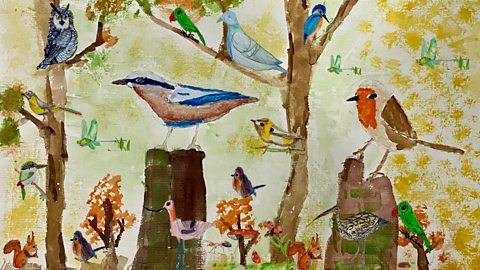
What you'll need
Anyone can take up nature journalling – you don’t need much to start!
- A journal or notebook of any size
- A pencil or pen
- Coloured pencils or watercolours (optional)
- Glue stick (optional)
Aneeshwar, 7
Aneeshwar lives in Warrington. He’s been named Young Conservationist Climate Leader by the Prime Minister and Young Scientific Explorer by the Scientific Exploration Society for creating short, online videos to raise awareness about protecting nature.
Here are Aneeshwar's top nature journalling tips - check them out!
Always have a pen and paper with you. You never know when inspiration might strike! It’s okay to just jot down simple thoughts or ideas you have when you’re out in nature, and then explore them more when you have a chance.
Bring a camera (or ask your adult). Ask your parent/carer to bring their smartphone or camera with them when you go out so they can help you take pictures of things you find interesting. This is good if the weather isn’t brilliant – it gives you a way to remember the plants and animals you see when you get home. You can also go back to the same spot on a different day if you want to try again!
Keep it simple. Don’t overthink it. Your journal is yours alone, so fill it with whatever makes you happy and reminds you what you love most about nature. There’s no right or wrong way to do it – just remember to have fun.
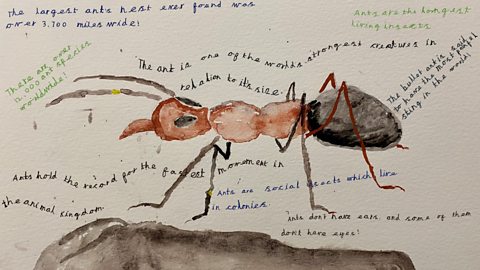
Benji, 8

Benji is a young naturalist and artist based in Sussex.
He calls himself Benjamin Fallow after the fallow deer, his favourite animals. “He loves drawing, especially in the countryside – so much so that he’s been carrying paper and pens in his backpack since he was three!” says his mum. Spending a lot of time in nature has encouraged him to learn more about the animals, insects, and plants around him.
Benji says, “When you really look at nature and see it, you love it and care for it too. All plants and animals and humans are connected, and we can’t survive without each other.”
Here are some of his suggestions:
Use materials found in nature. Nature journalling can be cheap (and even free) – mother nature can provide all of the materials you need! Benji likes to use twigs as pencils and brushes or makes his own paintbrushes out of sticks. You can also use lichen or moss as a sponge to paint with.
Spot wildlife anywhere. Who says you need to go to a national park to be inspired? If you look really closely, you’ll find nature everywhere – from your window, in your garden or in the street. Wherever you are, if you spot something that grabs your attention, write it down in your journal or do a quick sketch of it. You’re a nature journal-er now!

Entries from Benji's nature journal
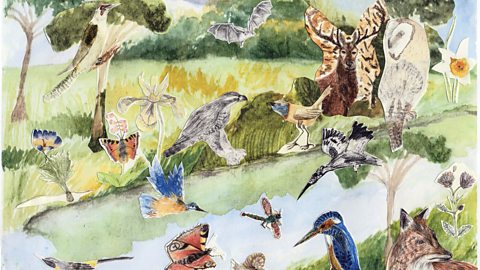
Image caption, Benji's beautiful creation of wildlife along a riverbank. This is how Benji would like all our rivers to look: free from pollution and full of wildlife!

Image caption, Benji has drawn a goshawk as well as diagrams of it's internal anatomy, feather and skull structure and woodland habitat.
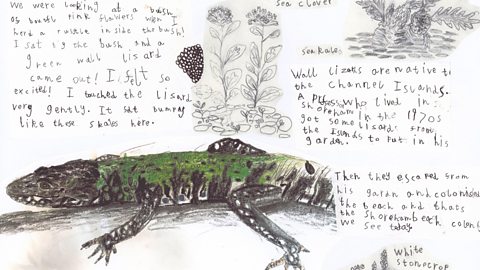
Image caption, An exciting find for the journal: a wall lizard!
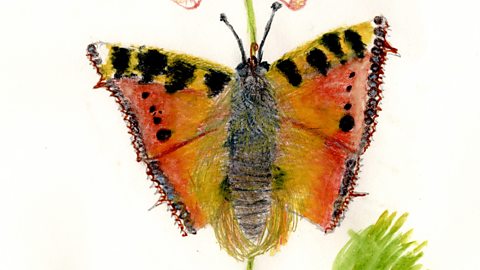
Image caption, Benji's favourite butterfly, the small tortoiseshell.
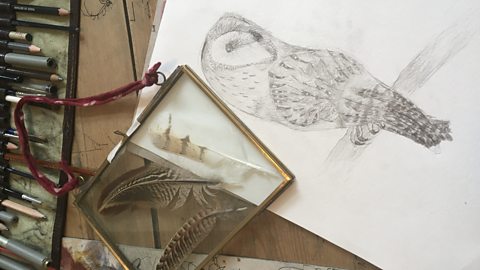
Image caption, A beautiful barn owl drawing by Benji with some framed feathers he found.
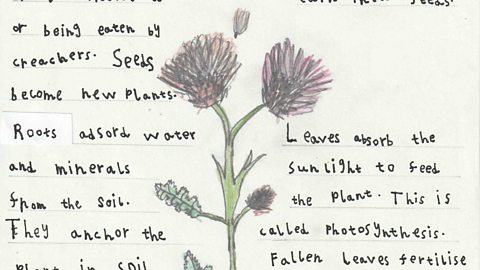
Image caption, Benji's beautiful drawing and descriptions of how a plant survives.
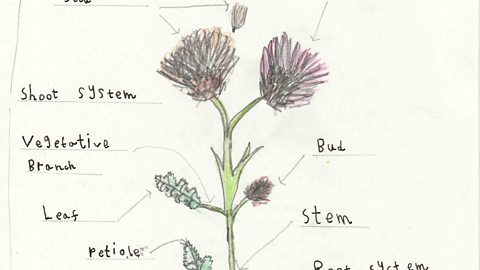
Image caption, Benji's diagram of the different structures of a plant including the roots, flowers and leaves.
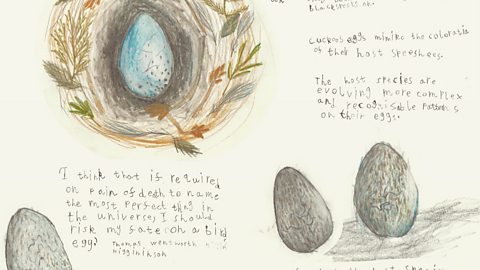
Image caption, Benji created this beautiful entry all about how cuckoos lay their eggs in other birds nests. Sneaky!
1 of 8
Louise, 16
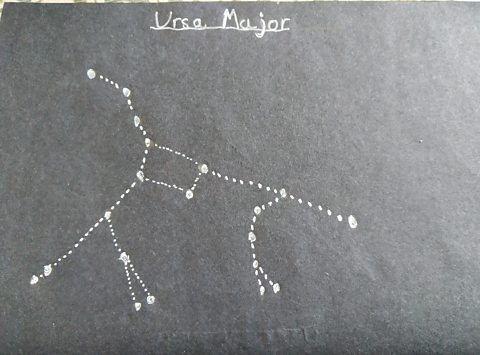
Louise has been nature journalling since she was 11. She lives on the Isle of Mull, one of the most beautiful islands in the UK teeming with wildlife. Louise is passionate about nature and wants to be a conservation vet when she’s older.
“For me, nature journalling can be whatever you want it to be. One of my first journals was focused on stargazing. I drew different constellations I could see at night and write down their names. I used black paper and white gel pens for the night sky,” says Louise.
Lacking inspiration for your nature journal? Check out these ideas from Louise.
Go out in all kinds of weather. Try exploring the outdoors when it rains, after the sun has set or when the skies are grey. You may think you’ll see more when it’s sunny, but sometimes it can be too hot for the animals for them to come out – so don’t be afraid of exploring when the weather’s not perfect!
Find a poem you like. If you come across a poem or short story about nature that you like, you can copy it into your journal and illustrate it. Or even better, why not write your own version?
Focus on colours. You can choose a colour theme for each month or season. For example, in the autumn, you could choose to focus on plants and animals in autumnal colours – like deep red, burnt orange or pale yellow.

Louise's nature journal entries
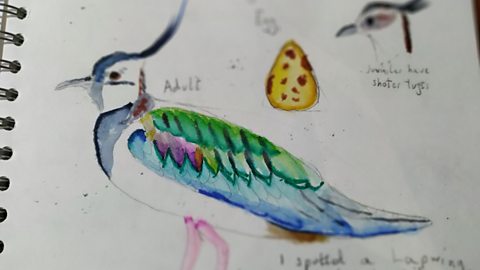
Image caption, Louise's beautiful painting of a northern lapwing for her nature journal.
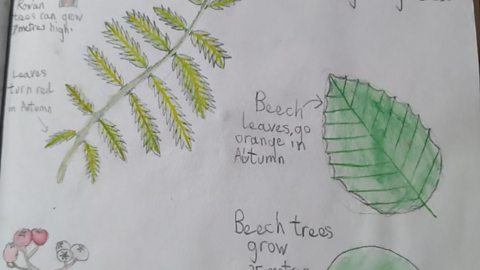
Image caption, How to identify different species of tree!

Image caption, Louise has drawn some different snowflake forms.
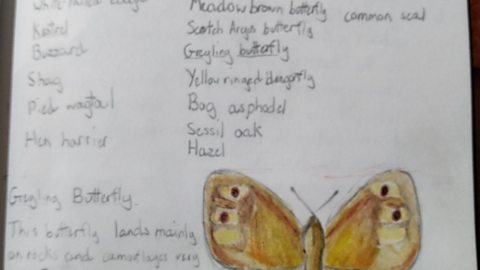
Image caption, Louise has remembered a nature walk by listing all the different species she saw along the way.
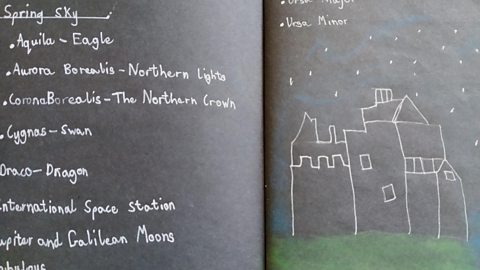
Image caption, Louise notes what she has seen stargazing in the spring!
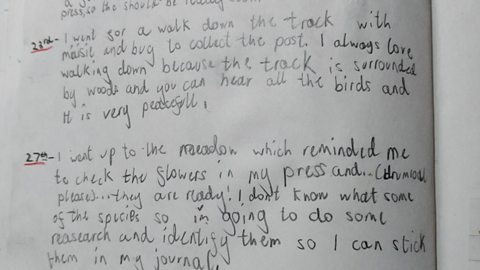
Image caption, Louise has written about her nature experiences throughout the month of July.

Image caption, You can even include things you collect from nature in your journal! Here Louise has stuck in examples of flowers she has found.
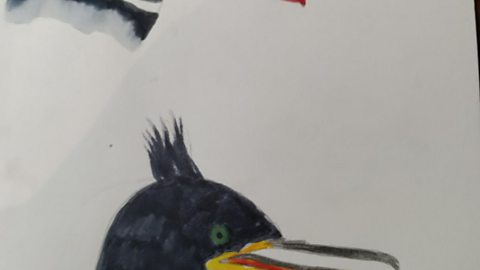
Image caption, Some colourful seabirds! Here Louise has drawn the profiles of different seabirds that she sees near where she lives.
1 of 8
Be safe!
If you’re going to venture outside, keep in mind these things.
- Always have an adult with you and let others know where you’re going
- If it’s cold, wear lots of layers
- Wear shoes that cover your whole feet instead of sandals
- Try not to touch plants or animals that you’ve never seen before or may be poisonous
Make a difference
Discover more about the planet and how to protect it with the Regenerators.
Four ways to give back to nature through rewilding
THE REGENERATORS
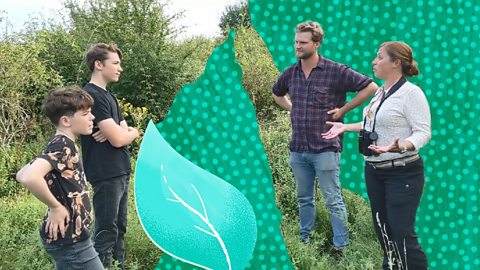
The Green Planet: Six amazing shots that tell a story
Check out these shots from the new BBC One series and the stories behind them.
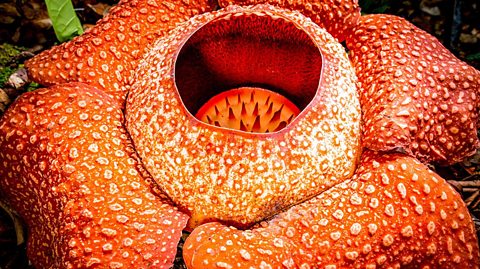
How to look for wildlife in your local space
THE REGENERATORS
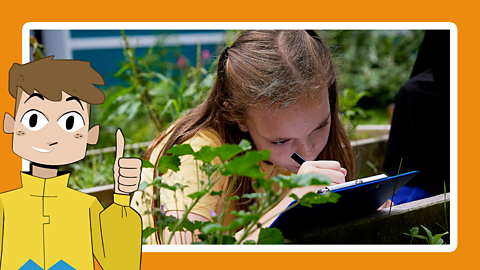
Back to the Regenerators
BBC BITESIZE
